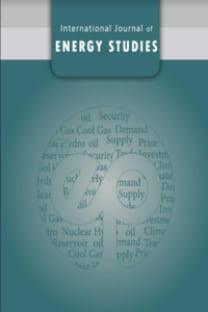Akkuyu Nuclear Power Plant Cost & Benefit Analysis
Turkey is in need of finding a sustainable source for electricity production due to an increasing demand and consumption for electricity. The country has a huge current account deficit most of which results from its energy imports. Plans for nuclear power construction are a key aspect of the country’s aim for sustainable economic growth. In Turkey, building up a nuclear power plant has always been a hot topic for discussion at least for 40 years. Turkey has had plans for establishing nuclear power generation since 1970. Today an application has been made for construction and operating licenses for the first plant at Akkuyu.Turkey’s electricity production was 240 billion kilowatt hours (kWh) or 240 Terawatt hours, gross from 53 gigawatts electrical capacity (GWe) in 2012. Of this, 105 150 Terawatt hours (TWh) (44%) came from gas (two thirds of this from Russia, most of the rest from Iran), 68 TWh (28%) from coal, and 58 TWh (24%) from hydro. In 2015, the percentage of electricity produced by gas decreased to 40%, which is still high. Net import was 3 TWh. Demand growth is about 8% pa, and in the first half of 2012 consumption was 119.3 billion kWh. Per capita consumption has risen from 800 kWh/yr in 1990 to about 2700 kWh/yr in 2011. Demand in 2023 is expected to be about 450 billion kWh, implying new investments by then of $100 billion. (World Nuclear Association, 2014)Plans for nuclear power are a key aspect of the country’s aim for economic growth, and it aims to cut back its vulnerable reliance on Russian and Iranian gas for electricity. The Ministry of Energy and Natural Resources (ETKB) projects 2020 electricity production as possibly 499 TWh in a high scenario of 8% growth, or 406 TWh with a low scenario of 6.1% growth. Plans are to have 30 gigawatts of coal fired electrical capacity by 2023. However, much of the country’s coal resources are lignite with low calorific value – less than 12.5 MJ/kg, and a substantial amount (Afsin Ebistan) at less than 5 MJ/kg. (World Nuclear Association, 2014)The Akkuyu nuclear project has an estimated investment cost of about US$ 20 Billion. Akkuyu plant will have four 1200 MWe AES-2006 units. The plant is estimated to be paid off in 15 years. It is planned to be operational in 2018.
Keywords:
Akkuyu Nuclear power plant,
___
- Akkuyu Nuclear. (2016, November 25). Akkuyu Nuclear. Retrieved from Akkuyu Nuclear: http://www.akkunpp.com/ DTI. (2016). Cost Benefit Analysis of Nuclear Power. Webarchive. Economist. (2016). Wind and Solar Power are even more expensive . Enerji ve Tabi Kaynaklar Bakanligi. (2014). 2015-2019 Stratejik Plan. Ankara: Enerji ve Tabi Kaynaklar Bakanligi. IEA. (2005). Projected Costs of Generating Electricity. Paris: OECD. International Energy Agency. (2016, 12 4). Kennedy, D. (2007). New Nuclear Power Generation In The UK: Cost Benefit Analysis. London: Department of Trade and Industry. Namli, H. T., & Namli, S. (2014). Nuclear Power In Turkey: Pros And Cons. The 2014 WEI International Academic Conference. New Orleans. TEIAS. (2016, 12 4). TEIAS. Retrieved from http://www.teias.gov.tr/Eng/Default.aspx The Ux Consulting Company. (2016, November 27). The Ux Consulting Company. Retrieved from The Ux Consulting Company: http://www.uxc.com World Nuclear Association. (2005). The New Economics of Nuclear Power. London: WNA. World Nuclear Association. (2014). Nuclear Power in Turkey. WNA. World Nuclear Association. (2016, November 25). The Economics of Nuclear Power. Retrieved from World Nuclear Association: http://www.world-nuclear.org/information-library/economic-aspects/economics-of-nuclear-power.aspx
- Yayın Aralığı: Yılda 4 Sayı
- Başlangıç: 2016
- Yayıncı: Türkiye Enerji Stratejileri ve Politikaları Araştırma Merkezi (TESPAM)
